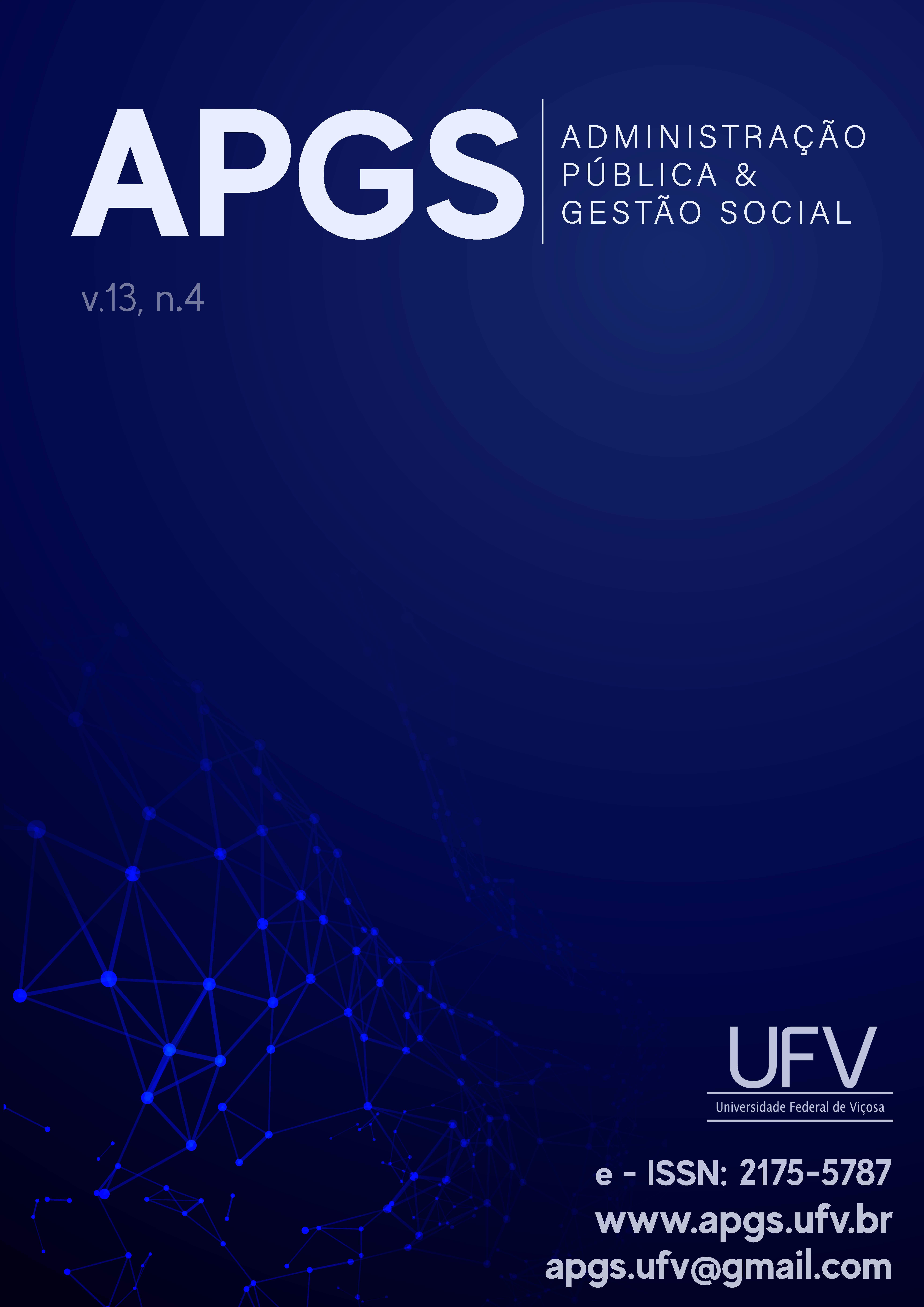Government innovation and collaboration to recover robbed and stolen vehicles
DOI:
https://doi.org/10.21118/apgs.v13i4.12274Abstract
Research goals: The purpose of this paper is to discuss the extent to which the intensity of collaboration between different government spheres shapes the organizational performance obtained from technological innovations in the public sector, based on the implementation of a system for recovering robbed and stolen vehicles, in which the Municipality of São Paulo and the Military Police of the State of São Paulo acted together.
Theoretical framework: The literature on collaborative governance and government innovations supports this analysis, with emphasis on its application in the area of public security.
Methodology: Through logistic regressions and analysis of spatial clusters, we analyzed data referring to 319,487 vehicles subtracted in the city of São Paulo between 2015 and 2017.
Results: While we identified a statistically significant increase in the probability of recovering a vehicle as a result of the collaborative efforts employed, we found also heterogeneous results in the different districts of the municipality of São Paulo.
Originality: This work fills a gap in the literature because, despite the increasing use of innovations as a way to improve public services, little is known about the intensity of collaboration necessary to generate the desired results in the face of the adoption of new technologies.
Theoretical and practical contributions: The results suggest that the effectiveness of innovations is associated with the intensity of collaboration between different public bodies. This indicates ways for public management to maximize the benefits of innovations in their activities.
Downloads
Published
How to Cite
Issue
Section
License

This work is licensed under a Creative Commons Attribution-NonCommercial-NoDerivatives 3.0 Unported License.
Authors who publish in the Journal of Public Administration and Management Social (APGS) must agree to the following terms:
• Authors retain copyright and give the journal the rightof first publication with the work simultaneously licensed underthe Creative Commons Attribution License, permitting sharingwork with the recognition of the work of authorship and publicationstarting in this journal.
• Authors have authorization to assume additional contractsseparately for non-exclusive distribution of the work releasepublished in this journal (eg. publish in institutional repositories oras a book), with an acknowledgment of its publicationstarting this journal.
• Authors are permitted and encouraged to post theirwork online (eg, in institutional repositories or on their websitepersonnel) at any point before or during the submission process, asit can generate criticism and helpful suggestions, as well asincrease the impact and citation of published work.
• Authors reserve the right of the editors of this journal to make in theoriginal works, alterations of normative order, orthographic andgrammatical, aiming at complying with its editorial policy and keep thedefault cult of language, respecting, however, the authors' style.
• Authors assume exclusive responsibility for their opinionsgiven in the articles published in this journal.



